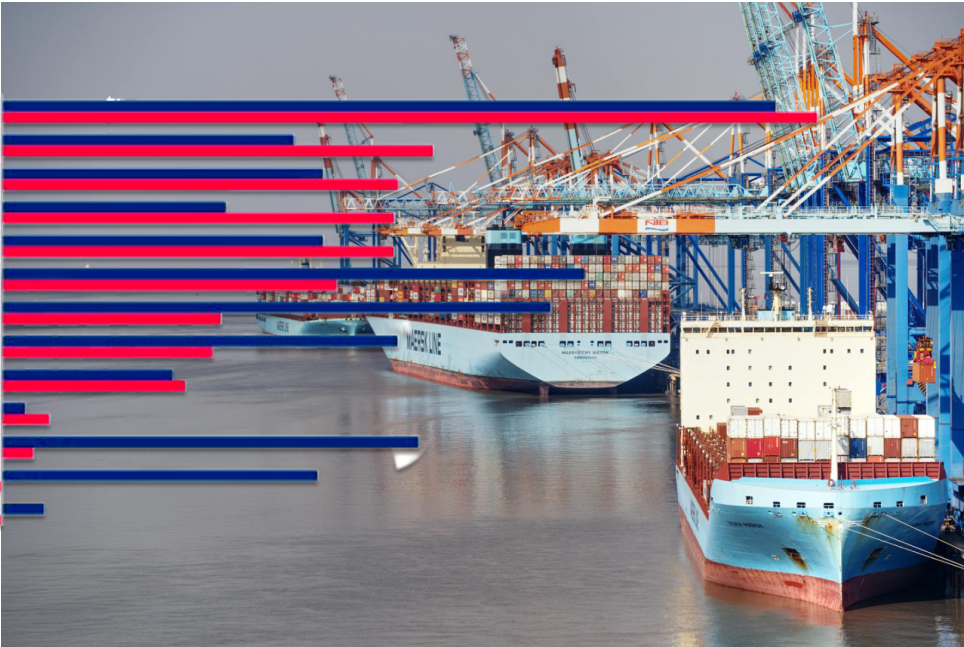
The container shipping industry is experiencing significant fluctuations in financial performance due to a combination of geopolitical events, market dynamics, and operational challenges. The recent crisis in the Red Sea, congestion at key Asian ports, and a surge in U.S. imports have all contributed to a notable rise in spot rates. Additionally, there has been an increase in earlier-than-usual imports amid concerns over delays caused by geopolitical risks and potential stockpiling ahead of the peak season. These factors have led to a dramatic increase in spot rates, reversing the previous downward trend observed earlier this year.
Since May 2, the World Container Index (WCI) has surged by an impressive 28.8%, following a 2.6% week-on-week decline on average between January 25 and May 2. Cumulatively, the WCI has expanded by 2.1 times in the year-to-date (YTD) 2024, ending on May 16. This rise in spot rates is expected to significantly boost the revenue of container shipping companies in the second quarter of 2024. Consequently, equity prices in the sector are on an upward trajectory, with the broader index rising by 19.0% in YTD 2024, outperforming the S&P 500 index, which increased by 11.1% during the same period.

Among individual stocks, ZIM Integrated Shipping Services has been the top performer, rising by an impressive 92.0% YTD. This is largely due to ZIM’s high exposure to spot rates. In contrast, European carrier Maersk’s stock remains down by 1.5% YTD, reflecting its continued expectation of an EBIT loss of up to USD 2 billion for 2024. Meanwhile, U.S.-based carrier Matson has seen a modest stock price increase of 5.4% YTD, lagging behind the broader index due to its localized services. On the other hand, Hapag-Lloyd, the only non-Asian carrier with significant gains, has seen its stock increase by 20.7% amid an upgraded outlook for an EBIT profit of up to USD 1.1 billion for 2024.
Asian carriers are currently outperforming their European counterparts, largely due to the congestion at Asian ports, which has strengthened ex-Asia freight rates. This trend has positively impacted their financial results for the first quarter of 2024, with carriers such as COSCO Shipping, Evergreen, Yang Ming, and Wan Hai reporting improved profitability. These carriers have seen their stock prices rise by roughly 20% to 50%, pulling some of them out of the red.

In terms of acquisitions, MSC, through its subsidiary SAS, has made a significant move by offering NOK 7.6 billion (USD 701 million) to acquire all 29 million ordinary shares of Gram Car Carriers (GCC). This offer represents a 28.3% premium to GCC’s prior day closing price on April 23, 2024, and translates into implied EV/EBITDA and P/E multiples of 6.0x and 6.3x, respectively. GCC, which owns a fleet of 16 pure car carrier vessels, reported healthy profits in the first quarter of 2024, with an EBIT margin of 70.4%, up from 48.8% in the same quarter of 2023. For MSC, this acquisition aligns with the industry trend of diversifying revenue streams and will help cushion the volatile earnings from container shipping.
The charter market continues to strengthen as carriers require additional tonnage to maintain service frequency. In the first quarter of 2024, time charter (TC) rates increased sequentially, although they remained lower year-on-year for most vessel sizes. Notably, TC rates for 4,250 TEU and 8,500 TEU vessels increased by 32.8% quarter-on-quarter and 21.9% quarter-on-quarter, respectively. This momentum continued into April, with TC rates for 4,250 TEU vessels rising by 60.5% month-on-month and 8,500 TEU vessels by 45.5% month-on-month. The strong charter rates are also boosting second-hand prices for vessels across various segments, with larger feeder vessels seeing the most significant price increases.

Investor confidence in the container shipping sector is on the rise, driven by the anticipation of improved profitability for 2024. As a result, equity valuations are increasing, with the sector’s price-to-book (P/B) multiple now trading only 6.1% lower than its long-term average of 1.0x (2009-2024, excluding the exceptionally high values of 2020-2022). This is a notable improvement from a month ago when the sector’s P/B multiple was 30.2% lower than its long-term average.
The financial landscape of the container shipping industry is dynamic and influenced by a myriad of factors, from geopolitical events to market trends. The recent surge in spot rates, bolstered by various short-term factors, is a testament to the industry’s resilience and ability to adapt to changing conditions. As carriers continue to navigate these turbulent waters, their strategic moves in acquisitions and charter markets will play a crucial role in shaping their financial performance and future growth.
Source: drewry
